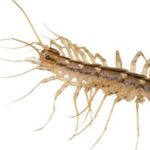
It’s a great time of year to enjoy the company of a dog (but then again, it always is). Late spring has brought warmer temperatures and nice weather – meaning it’s time for walks, dog park visits and generally more quality outdoor time with your four-legged friend.
Unfortunately, the more you and your canine companion are on the move; the more likely you are to encounter fleas. Contact with and exposure to other animals is the easiest way for fleas to be transmitted. The best way to stop fleas before they enter your home through a pet is to contact a veterinarian about flea control products.
However, dogs and other pets aren’t the only way fleas can enter your home. Once fleas are in your living environment, your dog could be at risk.
Signs of Infestation
| Pet Scratching | Typically, humans are alerted to a flea infestation by the way their pets behave, repeatedly scratching and grooming themselves on their necks, shoulder blades, and at the base of their tails. The flea activity causes discomfort as the adult fleas feed on the pet’s blood. Bathing pets and combing through the fur to look for black pellets or adult fleas is the best way to confirm the presence of the pests. |
| Bites | People also may experience bites which leave behind a breakout of small, hard spots that are swollen, itchy and red along the ankles and legs indicates flea activity. |
| Feces | Adult flea feces, commonly referred to as flea dirt, also can indicate activity. Flea dirt looks similar to coarse ground black pepper and may be seen in pet beds, carpets, rugs and other areas where the animal host rests. |
| Adult Flea Sighting | Fleas are easiest to see in their adult stage, especially if the homeowner and their pets return to the house after a long vacation or other absence during which the resident flea adults were not able to take a blood meal. Upon returning, the homeowners are often greeted by fleas jumping around and trying to land on them and their pets. |
| Flea Eggs | Flea eggs that were deposited by the female adult, fall off your pets as they move, allowing them to be disbursed throughout the environment where a pet spends time. Eggs are found in out-of-the-way places like:
|
Damage
Both humans and pets have adverse reactions to the salivary secretions released by fleas when feeding, ranging from mild irritation and rashes to anemia in extreme cases. Flea saliva can cause skin dermatitis in humans, which usually appears on patches of skin as itchy bumps or a rash. Pets can also react to flea bites and will commonly develop a flea hypersensitivity or flea-bite dermatitis. As a result, animals may develop crusty lesions and may constantly scratch at their skin, often leading to fur loss.
Perhaps the most serious aspect of a flea infestation is the time and effort it takes to remove. Dealing with the problem requires treating infected animals, cleaning flea-infested areas, and taking preventative measures to keep the fleas from returning.
As with many pests, fleas are not a pest to handle alone. If fleas are introduced into your home, Batzner offers a flea service to eliminate the threat of fleas. Learn more about fleas in the Batzner Pest Library.
Need a pest control estimate?
We'll call you! Our representatives are fast and friendly.
Protecting your Pets and Home from Fleas in Wisconsin
Serving Wisconsin






